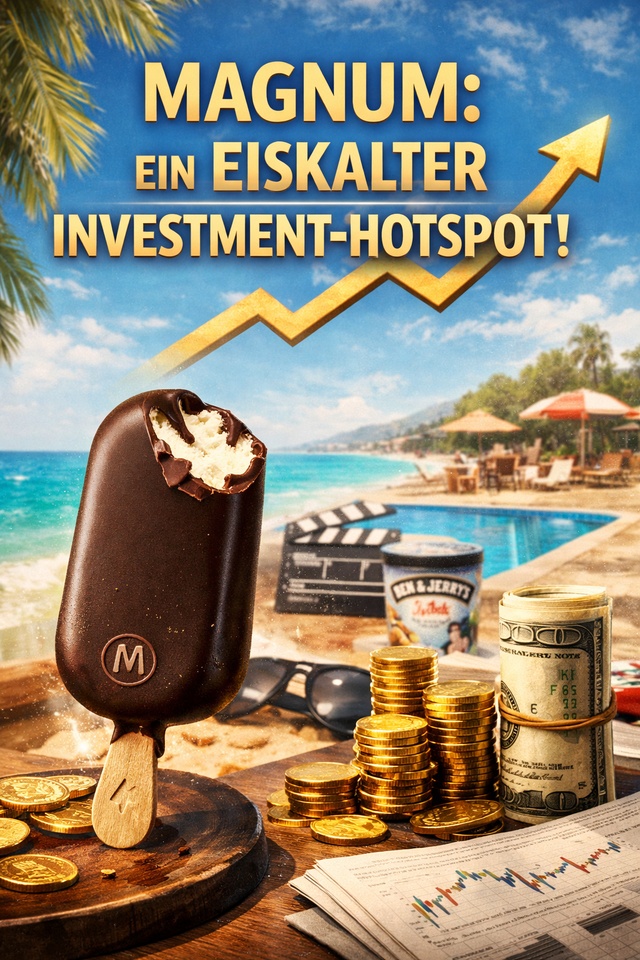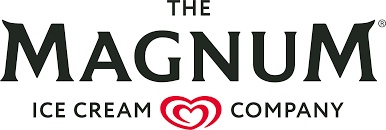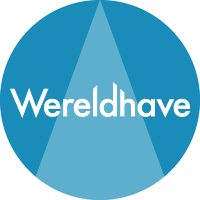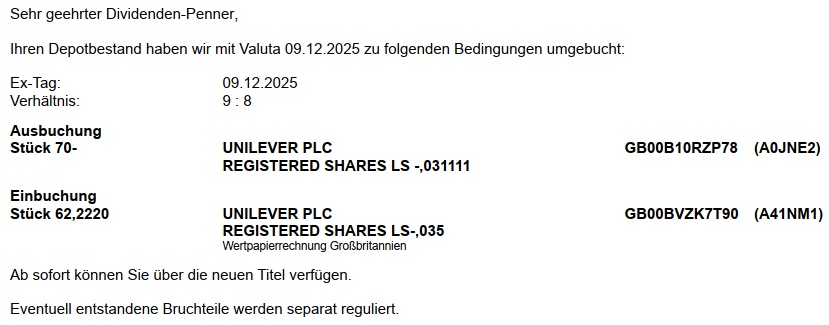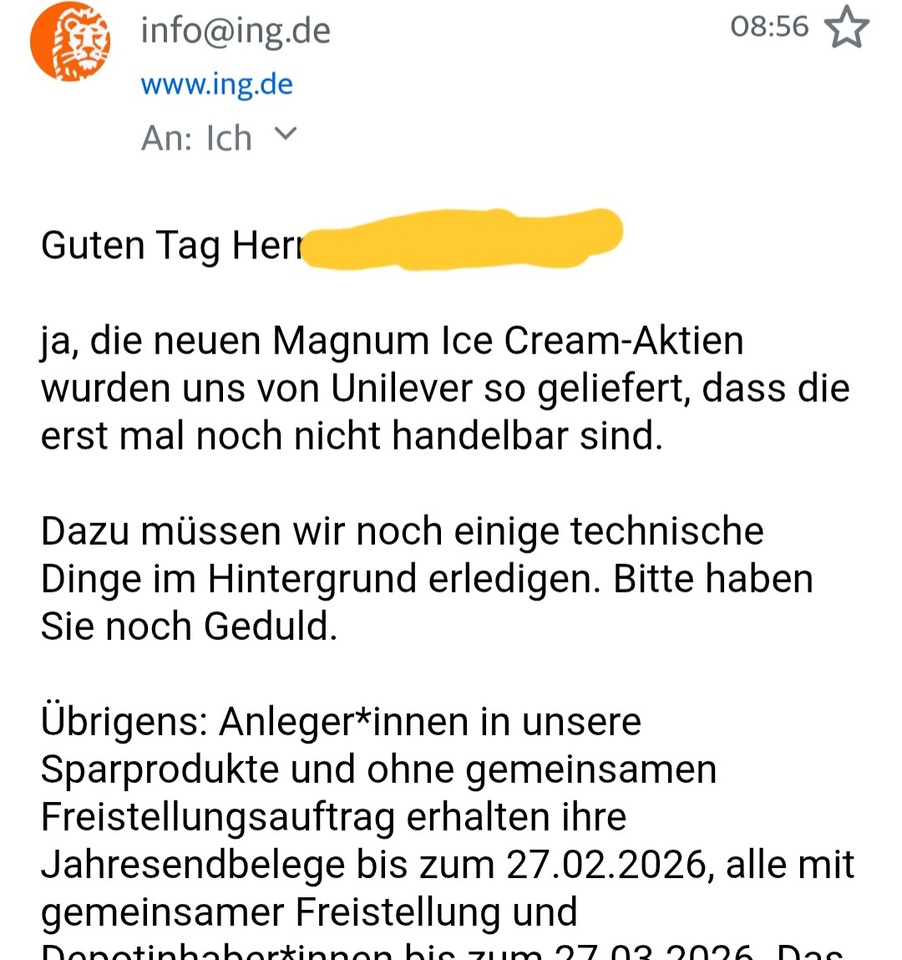$MICC
$ULVR (+0,68 %)
An ice cream, an outdoor pool, a false assumption
I thought Magnum was overrated for a long time.
It was a typical thought of a Western investor:
"When I go to the supermarket, the next store brand is already on the frozen food shelf anyway. So why Magnum?"
Case closed. I thought.
But then I observed myself. Not analytically, but honestly.
When do I actually eat ice cream?
At the outdoor pool? Not a store brand. Suddenly it's Cornetto or Magnum.
At the movies? The same ritual for years: Ben & Jerry's. No price comparison, no alternative.
On the beach, on vacation, on the promenade? Again, no no-name products - but brands that you know, that you trust, that you grab spontaneously.
And that's when the penny dropped.
The competition doesn't take place on the supermarket shelf.
Competition takes place at the point of consumption.
Magnum does not primarily compete with private labels.
Magnum occupies buying moments: Heat. Leisure. Vacation. Impulse. Places without alternatives, without time to think, without price sensitivity.
This is exactly where market power is created.
And suddenly the spin-off of the ice cream division no longer seems like a side note in the Group's strategy, but like a strategic liberation.
The strategic core: why the spin-off is a game changer:
With the spin-off from the Unilever Group, the Magnum Ice Cream Company will become an independent company for the first time - with a single focus: growth in the global ice cream business.
What was previously part of a huge consumer goods conglomerate can now:
Allocate capital in a targeted manner,
bundle management energy.
Drive expansion where ice cream really scales: warm countries, fragmented markets, impulse channels.
Especially in regions with weak retail chains (parts of Africa, South East Asia, Latin America), the brand is crucial. It is not the cheapest supplier that wins there, but the best known.
Magnum is perfectly positioned for this.
Market position: dominance instead of interchangeability
Magnum is not a nice ice cream brand.
Magnum is the market leader.
Around 21 % market share in the global ice cream business,
Larger than all competitors individually.
Clear premium positioning with global recognition.
The global ice cream market is estimated to be worth between 80 and over 100 billion US dollars, depending on the source. Growth is moderate but stable - and this is precisely where premium plays to its strengths: Pricing power instead of a volume war.
Magnum does not simply sell ice cream.
Magnum sells pleasure, reward, a little ritual.
Figures that carry the bull case
An investment is not just about the story - it's about the fundamentals.
Implied valuation of the spin-off: around 8 billion euros.
Ice cream is capital-intensive (cold chains, logistics), but highly profitable for premium brands.
Under the Unilever umbrella, the division was cash flow positive
Magnum recently generated around € 650 million in free cash flow - an indication of the financial quality of the spun-off activities.
Growth
Volume growth recently positive again,
Price increases were accepted by the market,
Premium and impulse channels are growing faster than traditional supermarket sales.
In short:
👉 Stable sales + rising margins + focus = free cash flow leverage
The real moat: Location beats price
Perhaps the most important point is often overlooked:
Magnum is not winning on the shelf.
Magnum is winning in the moment.
Outdoor pools
Cinemas
Beaches
Petrol stations
Street vending
Vacation regions
There are:
no price comparison
no private label
no alternatives
Whoever is present here owns the customer.
And this is exactly where Magnum is strong.
Opportunities for the future
Geographic expansion
Growth in warm, densely populated regions with increasing purchasing power
Premiumization
New varieties, limited editions, better ingredients → higher prices enforceable
Focused capital allocation
No more cross-financing for other Group divisions
Brand strength
Built up over decades, almost impossible to copy, emotionally anchored.
Risks - fairly considered
Of course, this is not a risk-free investment:
Seasonality can cause cash flows to fluctuate in the short term
Commodity prices (milk, cocoa, energy) influence margins
Logistics & cold chains are capital-intensive
Valuation after the spin-off must first stabilize
But:
These are known, manageable risks - not structural ones.
Conclusion: An underestimated quality value
Magnum is often viewed through the wrong lens.
Too often people think of supermarket shelves, too rarely of moments of consumption.
As an independent company, Magnum combines
Market leadership
premium margins
global scaling
strong cash flow prospects
The spin-off enables exactly what investors should love: Focus.
For long-term investors who believe in brands, pricing power and global consumer trends, Magnum is no ordinary ice cream business.
It is a high quality consumer goods investment that is just beginning to think for itself - and potentially be valued for itself.
Who wants to sell ice cream with me?







